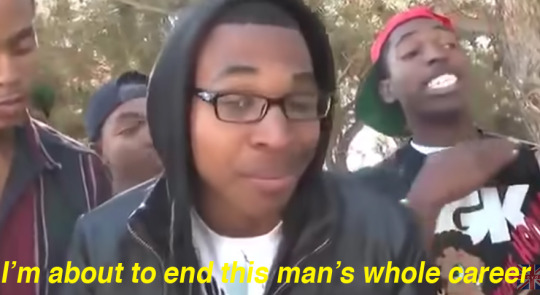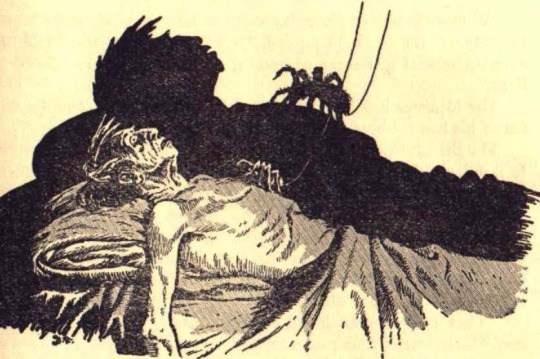#kalapalo people
Note
Hi, there! Could you help me find indigenous Brazilian faceclaims who could pass as under 30, please? Any gender would work! Thanks in advance.
PS.: I believe what is called peoples in Brazil is called Nation in the US, and regarding that, I wished to move away from the idea that the only indigenous peoples in the country are in the north/central-west regions, which is very much not true! So I do have a slight preference towards fcs from peoples whose territory are around south/southeast/northeast? But I'm fine with any fc you can suggest, truly! I don't need them to have proper resources, if they have a good amount of photos and/or footage that would suffice, but I know that too can be pretty hard to find.
Alex Pereira (1987) Brazilian [Pataxó].
Samela Sateré-Mawé (1996) Brazilian [Sateré-Mawé].
Tukumã Pataxó (1998/99) Brazilian [Pataxó].
Zahy Guajajara (1989) Brazilian [Guajajara].
Adanilo (1990) Brazilian [Zo'é].
Dickson Tatuyo (2001) Brazilian [Tatuyo].
Dandara Queiroz (?) Brazilian [Tupi].
Diamantha Aweti Kalapalo (?) Brazilian [Kalapalo].
Romanã Waiãpi (?) Brazilian [Waiãpi].
Isabela Santana (?) Brazilian [Pataxó].
Zaya Guarani (?) Brazilian [Guajajara, Kamorapi, Guarani Mbya].
Unspecified:
Lais Ribeiro (1989) Brazilian [African, Unspecified Indigenous, Portuguese].
Emanuela de Paula (1989) White Brazilian / Afro Brazilian - has also stated that she's Indigenous.
Daniel Matsunaga (1988) Brazilian [Portuguese, African, Unspecified Indigenous] / Japanese.
Emanuela de Paula (1989) Brazilian [Portuguese, African, Dutch, Unspecified Indigenous].
Bruna Tenório (1989) Brazilian [Unspecified Indigenous, European].
Marlon Teixeira (1991) Brazilian [Portuguese, Unspecified Indigenous, one quarter Japanese].
Bruna Linzmeyer (1992) Brazilian [Portuguese, African, Unspecified Indigenous, possibly other] / German.
Camila Mendes (1994) Brazilian [Portuguese, Unspecified Indigenous, likely Italian and other].
Valentina Sampaio (1996) Brazilian [African, Dutch and Unspecified Indigenous] - is a trans woman.
Dalila Bela (2001) Panamanian / Brazilian [Spanish, Portuguese, and some Unspecified Indigenous and African].
If anyone has any suggestions please let me know and I can update ASAP!
10 notes
·
View notes
Text
Click the source link to find a downloadable gif pack of #20 gifs of Brazilian content creator Diamantha Aweti Kalapalo. She is Kalapalo so cast her respectfully.
These gifs are part of Native Month 2022, where I’ll be releasing packs of Native fcs from Nov. 1st-30th. This project was inspired by @olivaraofrph. You can find all the packs by searching /tagged/native2022 on my blog.
If you find these useful, consider buying me a coffee here, but these are available regardless.
These fit @tasksweekly tasks: #015: Indigenous Peoples of The Americas, #063: Brazil

14 notes
·
View notes
Text
Indigenous leaders flags Bolsonaro's team for UN talks
It’s an attempt to provide legitimacy to the controversial policies of the government that caused much harm to the environment, especially the Amazon

Representatives of several indigenous peoples have rejected President Jair Bolsonaro government’s move to include an indigenous woman to participate in the United Nations General Assembly in New York City on September 24, 2019.
The woman, Ysani Kalapalo, does not represent the Kalapalo people (one of the indigenous communities of Brazil) and her inclusion without the consent of the leaders is a disrespect to the autonomy of indigenous peoples in the country, according to a statement signed by chiefs of 16 the indigenous communites, Xingu indigenous territory of Mato Grosso, on September 21.
The move is also an attempt to provide legitimacy to the controversial policies, adopted by Bolsonaro, which caused much harm to the environment, the climate and indigenous rights, especially the Amazon, they claimed. Further, they also alleged that Kalapalo regularly makes defamatory statements about indigenous peoples on social media.
“The Brazilian government offends the indigenous leaders of Xingu and Brazil by highlighting an indigenous woman who has been constantly working on social networks with the sole purpose of offending and demoralising Brazil's indigenous leaders and movements,” read the letter.
Continue reading.
#brazil#Brazilian politics#indigenous rights#environmental justice#environmentalism#politics#united nations#united nations climate summit#jair bolsonaro#ysani kalapalo#kalapalo people#mod nise da silveira
20 notes
·
View notes
Photo







Kalapalo people, Brazil
The Kalapalo are an indigenous people of Brazil. They are one of seventeen peoples who inhabit the Xingu National Park in the Upper Xingu River region of the state of Mato Grosso. They speak the Amonap language, a Cariban language, and are one of four peoples speaking languages in this family in the area. They have a population of 569 as of 2010.
Before the creation of the Xingu National Park in 1961, the Kalapalos lived at the confluence of the Tanguro and Kuluene, which are tributaries of the river Xingu. Since then, the Brazilian government has convinced them to settle near the Leonardo station, where medical treatment was made available. However, they frequently return to their former villages where they can grow cassava and cotton and where they can gather shellfish for art and craft-making purposes.
The Kalapalos have a strict code of ethics established by them that distinguish them from other peoples inhabiting the Upper Xingu. They all collectively share their culture as their fishing. Any public quarrels and fights are a serious violation of their code and are punished. They refrain from hunting land animals for fur by simply eating aquatic animals including fish.
402 notes
·
View notes
Photo


The man on your left is Percy Fawcett - archaeologist and world famous explorer, known best for his adventurous lifestyle and his mysterious disappearance in 1925. His life and disappearance served as an inspiration for many characters, books and film. Indiana Jones was modeled after him.
The man on your right is Dr. John Hemming who says Fawcett can go fuck himself.
Percy Fawcett was a British geographer and explorer best known for his disappearance in 1925 while searching for an ancient lost city he commonly referred to as 'Z'.

Fawcett was a former lieutenant and captain of an artillery, joined the Royal Geographical Society to study surveying and mapmaking, and worked for the British Secret Service in North Africa. He served for the War Office as a Major.
He was also friends with writer Sir Arthur Conan Doyle who you may know as the creator of Sherlock Holmes. Fawcett served as an inspiration for Doyle's book, "The Lost World".

The timeline for his disappearance:
1925: Fawcett sets out for his last known expedition to find the lost city of Z. He left specific instructions stating that if the expedition (that consisted of himself, his son, and his son’s friend) did not return, NO rescue expedition should be sent. (This request was later ignored as various rescue/recover expeditions were conducted for years to come; the first in 1927 and the most recent in 2003)
On April 20th, 1925 - His final expedition departed from Cuiabá, Brazil. It's a geographical centre of South America. His group was joined by 2 Brazilian laborers, 2 horses, 8 mules, and a pair of dogs.
On May 29th, 1925 - He sends out his last communication from the expedition in the form of a letter to his wife. He wrote that he was ready to go into unexplored territory with only Jack (his son) and Raleigh (his son's friend).
He sent this letter out from a major camp he created called Dead Horse Camp. Here's one problem: He sent out two letters from this camp - and in both letters he wrote different coordinates as to where his location was. To his wife, he gave the coordinates: (11°43′S 54°35′W) and to The North American Newspaper Alliance he gave the coordinates (13°43′S 54°35′W). Here’s a satellite image of what that would look like.
Nobody knows what happened to him and his crew after that.
The Theories:
Naturally, tons of theories were created after his disappearance.
His fellow explorer buddy (and then later, war hero) Henry Costin - who had joined Fawcett on expeditions before - theorized that he succumbed to starvation or exhaustion. He claimed he had good relations with the natives and seriously doubts they killed him.
The Villas-Bôas / Kalapalos Tribe Murder Theories -
Orlando Villas-Bôas, a Brazilian pioneer for indigenous activism (who I’d also recommend reading about), received skeletal bones that were alleged to have been Fawcett and had them analysed scientifically. Apparently, the 'murderer' of Fawcett explained to him that the trio lost the gifts they were to bring to the native tribes in the river. Continuing without gifts was a serious breach of protocol, they did so anyways, and the two younger men were thrown into the river during an encounter with the Kalapalo tribe while Fawcett (being older) was given a proper burial.
A Kalapalo chief called Comatzi told his people how the unwelcome strangers were killed.
Comatzi's predecessor, Kalapalos Chief Izarari, had told them he had killed Fawcett and his son Jack, by shooting them with arrows after Fawcett attacked him and his people when they refused to give him guides and porters to take him to their Chavante enemies. Raleigh had died from fever before they trio had reached the Kalapalos.
A slightly different variation was told by Villas-Bôas, stating that Chief Izarari told him that he had killed all three white men with his club the morning after Jack allegedly consorted with one of his wives. He also claimed that Percy Fawcett had slapped him in the face after the chief refused his demand for canoes and porters to continue his journey.
The Kalapalo also have an oral story of the arrival of three explorers: The three went east, and after five days the Kalapalo noticed that the group no longer made camp fires. They were killed by a violent neighboring tribe.

Later, scientific analysis determined the bones given to Villas-Bôas weren't Fawcett. A Kalapalo elder in an interview in the 1990s also denied that the bones were Fawcett's and that the tribe had nothing to do with his disappearance.
Who the bones belong to, and where the remains of Fawcett and his crew are, remain a mystery to this day.

Some of the other theories:
One theory, based on Fawcett's private letters, suggested that Fawcett never intended to return to Britain. Instead, he meant to found a commune in the jungle based on theosophical principles and the worship of his son, Jack.
Another theory, closely related to the previous one, was that Fawcett was targeted by an erotic siren who draws white men into the jungle.
Now would be a good time to mention that his older brother was an occultist and friend of Helena Blavatsky, co founder of the Theosophical Society. In fact, he helped her while she was creating The Secret Doctrine.
Here is a link to the PDF version of The Secret Doctrine and here are two links to buy a physical copy of volume one and volume two.
Fawcett’s wife also believed that the men were still alive, and claimed to have received a psychic message from her husband in 1934. She remained believing that they were alive and would come home until the day she died.
* Psychic Geraldine Cummins also reported receiving a telepathic message from Fawcett in 1936, and received four more communications until 1948, when he told her that he was dead.
“Cummins said, the Englishman had found the relics of Atlantis in the jungle but was now ill and semiconscious.”

The other conclusions draw about what happened include:
He was eaten by jaguars
He was still alive and was living off the land
He was still alive, found the lost city, and spent the rest of his days there
He was alive but a prisoner of a tribe
He became the chief of a cannibalistic tribe
He became a victim of amnesia, malaria, parasitic infections, you name it
He found the lost city and it was full of beautiful red headed aliens.
Him and his son were worshiped as gods in Roncador.
He was killed and had his head shrunken.
** Here are two different photos of the head that’s alleged to belong to Fawcett. Due to its disturbing nature it will be up to you to decide if you want to see these photos.
For the general public - Fawcett served as an exciting symbol of adventure and mystery. He's seen as this iconic explorer, an inspiration for many novels and characters - including Indiana Jones. At one point, a fictionalized version of Fawcett actually aids Indiana Jones in the 3rd book of the original series. His life was admirable and his disappearance was called, "one of the greatest mysteries of the twentieth century".
For experts....his reputation and life's work is much different.
Dr. John Hemming is a well established, highly experienced historian, explorer, and expert on Incas and indigenous peoples of the Amazon basin. His record is honestly too long to get into but just know that our knowledge of indigenous peoples from South America probably wouldn't be as extensive as it is without him. His books are still used as references, his work is praised by Brazilians and Europeans, and if you want to learn anything about the different tribes in South America - he's your guy.
His take on Fawcett? Well almost a century after Fawcett’s disappearance and presumed death Dr. Hemming was like

"Greatest explorer? Fawcett? He was a surveyor who never discovered anything, a nutter, a racist, and so incompetent that the only expedition he organised was a five-week disaster. Calling him one of our greatest explorers is like calling Eddie the Eagle one of our greatest sportsmen. It is an insult to the huge roster of true explorers. Had the advertisement been about a soap powder, it would fall foul of the Trade Descriptions Act."
That’s a god damn direct quote from the VERY first paragraph of an article John Hemmings wrote about Fawcett in 2017.
In fact the tagline for the article was:
"A new Hollywood film hypes Percy Fawcett as a great explorer. In fact, he was a racist incompetent who achieved very little."

Before his disappearance, Faucett was known for making....odd claims.
"While on the expedition in 1907, Fawcett claimed to have seen and shot a 62-foot (19 m) long giant anaconda, a claim for which he was ridiculed by scientists. He reported other mysterious animals unknown to zoology, such as a small cat-like dog about the size of a foxhound, which he claimed to have seen twice, and the giant Apazauca spider [a mythical GIANT spider that turns its victims black as it poisons them]."


Some other incredible quotes from the article (that I highly encourage reading) include:
"He [Fawcett] emerges from it as a typical Edwardian colonial officer — friendly with South Americans but looking down on them, appalled by the cruelty at some rubber stations, full of gossip about life on this remote but boom-rich backwater, and uninterested in nature apart from banalities about dangerous snakes and irritating insects."
"The Maxubi were friendly and hospitable, but continuing on a forest trail Fawcett met another tribe (probably Sakurabiat) to whom he took a violent dislike. When one aimed a drawn bow at him, Fawcett shot the man with a Mauser revolver — absolutely forbidden by Brazil’s Indian Service. He described them as he imagined Neanderthals or Piltdown Man to have looked: ‘large hairy men, with exceptionally long arms, and foreheads sloping back from pronounced eye ridges… villainous savages, hideous ape men with pig-like eyes.’ No Amazonian Indian has body hair or looks remotely like this — I know, because I have spent time with over 40 different peoples. “
“These two groups, and the two on the Heath, were the only tribal people seen by Fawcett. He liked two of them. So it was strange that he wrote racist gibberish that ‘there are three kinds of Indians. The first are docile and miserable people, easily tamed; the second, dangerous, repulsive cannibals very rarely seen; the third, a robust and fair people, who must have a civilised origin.’ "
"He now took two inexperienced ex-public schoolboys, his son Jack and Jack’s friend Raleigh Rimmel."
"All expeditions in the past four decades had brought plenty of presents such as machetes, knives and beads. Fawcett had none. He committed other blunders that antagonised their hosts [the natives]. So it was only a matter of days before they were all dead."
"Such was the sad tale of this incompetent, whose only skill was in surveying."
"Then it was forgotten until 2009 when David Grann, a talented writer, published The Lost City of Z. Unfortunately, Grann hyped the story out of all proportion and wrongly depicted Fawcett as a great explorer. As he cheerfully admitted, Grann had no experience of rainforests. But he let his imagination run riot, with pages about ferocious piranhas, huge anacondas, electric eels (actually a fish that has never killed a man), frogs ‘with enough toxins to kill 100 people’, ‘predator’ pig-like peccary, ‘sauba ants that could reduce the men’s clothes to threads in a single night, ticks that attached like leeches (another scourge) and the red hairy chiggers that consumed human tissue. The cyanide-squirting millipedes. The parasitic worms that caused blindness…’ and so on. Everyone who know tropical forests, including me, knows that almost every word of this is nonsense."
"Grann wrote that, as an author, he would have been lost without my three-volume, 2,100-page history of Brazilian Indians and five centuries of exploration. He quotes quite often from my books. So he had no excuse for describing Fawcett’s brief visits to three indigenous villages as the ‘discovery of so many previously unknown Indians’, from whom ‘he learned to speak myriad indigenous languages’, and adopted ‘herbal medicines and native methods of hunting [so that he] was better able to survive off the land’.

Dr. Hemmings also refers to the colonizers who enslaved the natives in the area as 'thugs'

and fucking ended the article with
" Hollywood believed everything Grann wrote, and then hyped it up more. ... But I could recommend scores of writings by real explorers."

#long post#history#historical#archaeology#mysteries#unsolved mysteries#education#TIL#Percy Fawcett#Dr. John Hemming#Indigenous History#this is a long post but it's so worth it! I spent all day yesterday researching about it#the ENERGY
4 notes
·
View notes
Photo

Brazilian indigenous leaders denounce Bolsonaro before UN speech
Open letter decries ‘colonialist and ethnocidal policies’
President expected to attack left and foreign critics in New York
Indigenous leaders in Brazil have denounced Jair Bolsonaro’s “colonialist and ethnocidal” policies as the far-right populist headed to New York to defend his treatment of the Amazon and its inhabitants. (...)
Brazil’s president is expected to use his UN debut to launch a Trumpian assault on the left and push back against foreign criticism of his treatment of Brazil’s environment and indigenous communities. He has recruited a rare pro-Bolsonaro indigenous voice, Ysani Kalapalo, to travel with him to New York in an effort to soften his notoriety as a rainforest destroyer.
But in a strongly worded open letter, 16 indigenous leaders from Brazil’s Xingu indigenous park spurned Bolsonaro’s “colonialist and ethnocidal” programme for their communities, which he has pledged to open for commercial exploitation.
The leaders claimed the sole interest of Kalapalo – who recorded a recent video denying Bolsonaro was to blame for the Amazon fires – was to “insult and demoralize Brazil’s indigenous leaders and movement” on social media.
“Not content with its attacks on indigenous peoples, the Brazilian government now seeks to legitimize its anti-indigenous policies by using an indigenous figure who sympathizes with its radical ideologies,” they added.
In a recent article for the Guardian, the Xingu’s best-known leader, Raoni Metuktire, accused Bolsonaro of doing nothing to stop ranchers invading indigenous lands. (...)
2 notes
·
View notes
Photo


PERCY FAWCETT / charlie hunnam (the lost city of z)
born: august 18, 1867 | disappeared: may 29, 1925
more information about disappearance and this too (scroll a little)
A British geographer, cartographer, archaeologist, and explorer of South America who is thought to be the inspiration for Indiana Jones.
In 1925, with funding from a London-based group of financiers known as the Glove, Fawcett returned to Brazil with his eldest son Jack and Jack's best and longtime friend, Raleigh Rimell, for an exploratory expedition to find "Z"—his name for an ancient lost city which he and others believed existed in the jungles of Brazil. . Fawcett left instructions stating that if the expedition did not return, no rescue expedition should be sent lest the rescuers suffer his fate.
Many people assumed that local Indians killed them, as several tribes were nearby at the time. The Kalapalos were the last tribe to have seen them. It’s believed that Fawcett's party of three was too few to survive in the jungle, and his expectation that his Indian hosts would look after them was likely to have antagonized them by failing to bring any gifts to repay their generosity. Over the years, more than a dozen expeditions have looked for Fawcett—but none have been able to prove what happened to him.
taken by kate aa
6 notes
·
View notes
Text
“Before the establishment of park boundaries and permanent contact with Brazilians, the ethnographic situation in the Upper Xingu Basin was complicated by the fact that a number of aggressive tribal groups surrounded this territory (see Villas Boas and Villas Boas 1970). Relationships between members of Upper Xingu society and some of these groups were occasionally amicable, but accusations of witchcraft murder and revenge killings by groups on both sides took place more frequently. To the north were the Juruna (Tupi speakers), a group that ex- changed hostilities with the Kamaiura (see Oliveira 1968), and the Suya (Gé speakers), dreaded by the Trumai because of their raids on villages (see Murphy and Quain 1955). To the west were the Txicao (Carib speakers) who attacked the Mehinaku, Jagami, and Waura frequently enough to cause relocation of those groups on several occasions (see Galvao and Simoés 1965). Living to the east of the Culuene River, beyond the tributary stream known as the Tanguro, were the Yaguma, an extinct group of Carib speakers with whom the Kalapalo were on uneasy terms. According to the latter, the two groups exchanged women and established trading relationships, but the Kalapalo feared them because the Yaguma occasionally killed men who ventured into their territory.
Thus, the residents of the Upper Xingu Basin found themselves surrounded by Indians whose aggressive attitudes contrasted sharply with their own ideal of peaceful behavior. Despite the fact that many of these hostile groups are now living within the boundaries of the Park and have ceased their overt aggression against members of Upper Xingu society, they are considered a distinct kind of human being whose behavior precludes their incorporation into that society.
The Kalapalo refer to these formerly hostile tribes — or, more generally, to any Indians who are not part of Upper Xingu society — as angzkogo, “fierce Indians.” This category of “human beings” is conceived primarily in terms of a kind of behavior labeled ztsotu, which refers to unpredictable anger and violence. Itsotu behavior is often explicitly contrasted with a concept mentioned earlier, ifutisu (peaceful, generous behavior), which is one important distinctive feature of the category “people of Upper Xingu society.” ”
- Ellen Basso, The Kalapalo Indians of central Brazil
0 notes
Text

Wazzzzzap internet. Feast your eyes and your shelves on May’s
SPD Recommends *Backlist*,
ten titles from the 90's that continue to rock our world. boo-ya.
Scrunchies, Beverly Hills 90210, Ryan Gosling’s long hair, Xena, The Parent Trap with Lindsay Lohan, all those Bagel Bites commericals...just a small glimpse into humanity's greatest feats. It's not a coincidence that all these feats took place in the 90's either. That's because the 90's were great. It only makes sense that literature in the 90's was great too.
So hold tight to your Tamagotchi, Furby, or Beanie Baby collection: The 90's are back in the form of 10 awesome SPD backlist titles. These titles will leave you glowing brighter than any glow-in-the-dark star on your bedroom ceiling ever could. feat. New Star Books, Talisman House, Publishers, Kelsey Street Press, & more!
1. Debbie: An Epic by Lisa Robertson (New Star Books, 1997)
Lisa Robertson's Debbie: An Epic was a finalist for the 1998 Governor General's Award for Poetry. As arresting as the cover image, Robertson's strong, confident voice echoes a wide range of influences from Virgil to Edith Sitwell, yet remains unique and utterly unmistakable for that of any other writer. Brainy, witty, sensual, demonstrating a commanding grasp of language and rhetoric, Debbie: An Epic is nevertheless inviting and easy to read, even fun. Its eponymous heroine will annihilate your preconceptions about poetry - and about the name "Debbie."
2. The Tower of Babel by Jack Spicer (Talisman House, Publishers, 1994)
An established writer from an Eastern college returning to his former San Francisco haunts becomes entangled in a labyrinthine series of events that culminate in the sudden violent death of a respected poet. Described by Lewis Ellingham and Kevin Killian as "a satiric look at the private world of poetry gone public in the wake of the Six Gallery HOWL reading of October, 1955," The Tower of Babel includes finely detailed sketches of the San Francisco poetry world and gay life as they existed then.
3. Four Year Old Girl by Mei-mei Berssenbrugge (Kelsey Street Press, 1998)
In this extraordinary new collection of poems by Mei-mei Berssenbrugge, writing reflects human presence in the phenomenal world. Physical sensations of experience—a horizon, moisture, a child, a piece of quartz, a loss—become objects of focus and poetic elements. Her written lines, like strings of protein, both create and destroy bonds. Reading affords moments of exquisite vulnerability in which the perceived world is suddenly exposed to the quick. The pace of everday life slips into that of a waking dream. Winner of the 1998 Western States Book Award.
4. Brooklyn Bridge by Leslie Kaplan (Station Hill Press of Barrytown, 1992)
This is the first English translation of Leslie Kaplan's haunting novel about the meaning of childhood and the mysteriously intimate interworkings of child and adult. Here four adults and a child come together in a chance meeting in New York's Central Park, where the child's presence is a question to all of them. The novel pursues the erotic complexity of their various relationships with a special focus on the disturbing interaction between Julien and the child Nathalie. Woven through the affecting depictions of human characters, is the extraordinary depiction of the city, its tensions, its unexpected necessities, its urgencies. Written in a rhythm as electric as its setting, Brooklyn Bridge is a novel for the questioning child in us all.
5. WHATSAID Serif by Nathaniel Mackey (City Lights Publishers, 1998)
Nathaniel Mackey's third book of poems, WHATSAID Serif, is comprised of installments 16 through 35 of Song of the Andoumboulou, an ongoing serial work whose first fifteen installments appear in his two previous books, Eroding Witness and School of Udhra. Named after a Dogon funeral song whose raspy tonalities prelude rebirth, Song of the Andoumboulou has from its inception tracked interweavings of lore and lived apprehension, advancing this weave as its own sort of rasp. These twenty new installments evoke the what-sayer of Kalapalo storying practice as a figure for the rough texture of such interweaving. Mackey has suggested that the Andoumboulou, a failed, earlier form of human being in Dogon cosmology are "a rough draft of human being," that "the Andoumboulou are in fact us; we're the rough draft." The song is of possibility, yet to be fulfilled, aspiration's putative angel itself.
6. Another Smashed Pinecone by Bernadette Mayer (United Artists Books, 1998)
"It's OK that poetry won't save us from circumstance, or pave our road to what we're tempted to call Heaven, but it doesn't matter—because reading Bernadette Mayer's poetry is where I always want to be. Here, within the playfulness of her language, is where consequences of daily living are histories of heart and mind. Poetry is in life and life is in Bernadette's poetry, and that's all the reassurance we need."—Kristin Prevallet
7. Sight by Lyn Hejinian and Leslie Scalapino (Edge Books, 1999)
Equal parts poetry and philosophy, Lyn Hejinian and Leslie Scalapino's collaboration is organized around the act and idea of seeing, written in the form of a literary dialogue. "We were interested in a joint investigation into the workings of experience," writes Hejinian in the introduction, "how experience happens, what it consists of, how the experiencing (perceiving, feeling, thinking) of it occurs, what the sensation of sensing tells us." Visual descriptions interact with meditations on contemporary life, Western intellectual history, dream, film, poetry, and collaboration itself.
8. Close to Me & Closer...(The Language of Heaven) and Desamere by Alice Notley (O Books, 1995)
Alice Notley's two books collected here, Close to Me & Closer...and Desamere, are works that are wholly their art, meaning they occur as their language shape measure. She's invented a measure. The text is a rich current crossing, as at the moment of imagining, into being in death and in an expanded life. Notley transgresses conventional contemporary categories of genre; rather than genre, the form of the writing is the mind's inner sense and motion. "Alice Notley is, I think, the most challenging and engaging of our contemporary radical female poets...infused with uncommon verbal originality, intelligence and joyous playfullness, full of heart, intensity and wonder, provocatively addressing forever unsolved questions of form and identity, life and death, imagination and gender, Notley's poems are unsettling and inspiring"––the San Francisco Chronicle.
9. Barefoot Heart: Stories of a Migrant Child by Elva Trevino Hart (Bilingual Review Press, 1999)
A vividly told autobiographical account of the life of a child growing up in a family of migrant farm workers. It brings to life the day-to-day existence of people facing the obstacles of working in the fields and raising a family in an environment that is frequently hostile to those who have little education and speak another language. Assimilation brings its own problems, as the original culture is attenuated and the quality of family relationships is comprimised, consequences that are not inevitable but are instead a series of choices made along the way. It is also the story of how the author overcame the disadvantages of this background and found herself.
10. Local History by Erica Hunt (Roof Books, 1994)
"Erica Hunt's Local History blows the public and the personal inside out, estranging familiar forms of writing, letter and diary, while snatching moments of intimacy and insight in disembodied prose that anatomizes artifacts of mass culture, such as screenplay and cartoon strip."—Harryette Mullen
3 notes
·
View notes
Photo

Kuikuro The Kuikuro form part of what may be called the upper Xingu Carib sub-system. This is nowadays made up of four groups: the Matipu, Nahukwá and Kalapalo, as well as the Kuikuro. Their traditional territory is the eastern part of the catchment area that forms the Xingu river (the Culuene, Buriti and Curisevo rivers). The Kuikuro currently inhabit three villages. The most important and largest of these is Ipatse which has more than 300 people and is set slightly back from the left bank of the middle Culuene. Nowadays the Kuikuro are most populous people of the upper Xingu. Kuikuro villages are similar to all upper Xingu villages. The organisation of the villages are further aspects of upper Xingu culture that reveal its continuity from earliest times to the present. The circular villages with a central patio are laid out in accordance with precise principles and orientation that provide an understanding of the political and social organisation of Xingu society. The patios and radial paths that leave the patio are aligned with the points of the compass (north-south, east-west) and with important elements of the local landscape such as other communities, ports and bridges. This layout reveals not only the integration of multiple villages across the territory but also a sophisticated understanding of architectonic design, astronomy and geometry. Kuikuro houses, like all those of the upper Xingu, are large oval-shaped longhouses (‘malocas’). Their structure and construction reveal an extremely complex level of architectonic understanding. The ‘maloca’ is a communal house - in a general sense it is also a traditional social unit and a dwelling loaded with symbolism. In other words the ‘maloca’ is a divine archetype, the womb of the mother earth, the house of the sun and moon and the receptacle of the celestial ray. The highest part of the ‘maloca’ is a space formed by four central beams - an area that represents the world of knowledge. #neonurchin #neonurchinblog #dedicatedtothethingswelove #suzyurchin #ollyurchin #art #music #photography #fashion #film #words #pictures #neon #urchin #longhouse #xingu #xingusociety #cosmos #rituals #harmony #community #nature (at Xingu, Amazonas, Brazil) https://www.instagram.com/p/CIX3IypFw_y/?igshid=9gvxk0kp99hm
#neonurchin#neonurchinblog#dedicatedtothethingswelove#suzyurchin#ollyurchin#art#music#photography#fashion#film#words#pictures#neon#urchin#longhouse#xingu#xingusociety#cosmos#rituals#harmony#community#nature
0 notes
Text
23 Quick Tips Regarding Alamy | alamy
23 Quick Tips Regarding Alamy | alamy – alamy
| Encouraged to help my own weblog, in this particular occasion We’ll demonstrate regarding keyword. And now, this can be a 1st graphic:
Book Covers Stock Photos & Images, Book Covers Stock Photography – Alamy – alamy | alamy
Why not consider photograph above? is which incredible???. if you think thus, I’l m show you many graphic once more underneath:
So, if you like to receive all these incredible pics related to (23 Quick Tips Regarding Alamy | alamy), click save button to download the images for your pc. There’re prepared for save, if you like and wish to grab it, just click save badge in the page, and it’ll be instantly down loaded to your home computer.} Finally if you would like obtain new and the recent picture related to (23 Quick Tips Regarding Alamy | alamy), please follow us on google plus or bookmark this site, we try our best to provide regular up grade with all new and fresh images. Hope you love staying here. For some updates and latest information about (23 Quick Tips Regarding Alamy | alamy) pics, please kindly follow us on tweets, path, Instagram and google plus, or you mark this page on book mark section, We attempt to present you up grade periodically with all new and fresh images, love your surfing, and find the perfect for you.
Here you are at our site, articleabove (23 Quick Tips Regarding Alamy | alamy) published . At this time we are excited to declare that we have found an incrediblyinteresting nicheto be discussed, that is (23 Quick Tips Regarding Alamy | alamy) Lots of people searching for info about(23 Quick Tips Regarding Alamy | alamy) and of course one of them is you, is not it?
seaton sluice – alamy | alamy
Abstract Phoenix Bird Symbol Stock Photos & Abstract … – alamy | alamy
PE – CUZCO: Machu Picchu, the old Inca city in the Andes … – alamy | alamy
Rote Teufel Dämonenmaske, Porträt, Ritter Festival Kaltenberger … – alamy | alamy
kingfisher in flight Stock Photo: 23 – Alamy – alamy | alamy
House of CB Teal Velvet Maxi Dress, Alamy Dress, Size S, SOLD OUT … – alamy | alamy
Pia Zadora Stock Photos & Pia Zadora Stock Images – Alamy | Hair … – alamy | alamy
Lizenzfreie Bilder Stockfotos und -bilder, Lizenzfreie Bilder Stock … – alamy | alamy
The Forest of Bowland – England's answer to Tuscany – alamy | alamy
IMG_0907 – alamy | alamy
Japan, Asia, holiday, travel, Cherry blossoms, Yamaguchi … – alamy | alamy
hungry lion Stock Photo: 23 – Alamy – alamy | alamy
Ouzoud Waterfalls, Beni Mellal, Morocco, Africa Stock … – alamy | alamy
The Tower of London with the thousands of rememberance poppies. – alamy | alamy
Garten Eden Koblenz Reizend Populists Stock S & Populists Stock … – alamy | alamy
A young woman belonging to the indigenous Himba people pictured in … – alamy | alamy
Happy Easter. A cute baby Egyptian Goose (Alopochen aegyptiaca). – alamy | alamy
Happy Halloween! 24 funny jokes, quotes, messages & songs … – alamy | alamy
Kalapalo Indios, Mato Grosso, Brazil, South America Stock Photo … – alamy | alamy
untitled-18 – alamy | alamy
Clock, Alarm, Alarm Clock, Dial, Time – alamy | alamy
untitled-9 – alamy | alamy
from WordPress https://americanartist.club/23-quick-tips-regarding-alamy-alamy/
0 notes
Text
Brazil's Indigenous Gaming Scene Is On the Rise
Featuring a native Brazilian as its protagonist, Araní takes a big step toward making gaming more authentic and inclusive.

It’s a steamy night in the jungle. A huge one-legged creature with a detached jaw roars in the face of the protagonist, a young Indigenous woman. She grips her double-edged spear in both hands, readying herself for a fight.
This is a scene from Araní, a Brazilian game currently in development. The game is named after its lead character, an Indigenous warrior of the Sun Tribe intent on saving her people from a mysterious, mythological power. It was announced in 2018 by Diorama Digital, a studio based in Pernambuco, a state in Northeastern Brazil.
Brazil is the fifth-largest country in the world and is home to many different cultures. There are those hailing from the favelas seen in movies like 2002's City of God, and the Carnival parties and tropical bossa nova which are familiar to tourists, but it is the country’s many Indigenous peoples and traditional communities that caught the attention of the team at Diorama.
The country is also home to 850,000 Native peoples, living in 300 communities. They make up 1.1 percent of the country's 213.3 million inhabitants, according to the Brazilian Institute of Geography and Statistics.
During the game’s planning, game developer Everaldo Neto says Araní’s willpower made her the obvious choice for the protagonist. “Everything happened in a very organic manner—it was almost like she picked us, and not the other way around,” he says. “We knew we needed a strong woman who was small considering the scale of her challenges, but huge in her deeds.”
The gaming scene in Brazil’s Indigenous communities is surging too. For example, during 2020, in the middle of the pandemic, a Free Fire tournament named the Indigenous Villages Cup saw 288 “guilds,” each made up of Indigenous gamers, participate. Among the ethnicities were Guaraní, Karajá, Xakriabá, Kalapalo, Kaigang, Kaiowá, Amondawa, and Xokleng peoples, just to name a few.
WIRED spoke to three female Indigenous gamers to learn more about their experiences in Brazil's gaming communities, and all three explained that some players considered their presence unusual, while others even doubted their Indigenous origins or heritage.
Continue reading.
#brazil#environmental justice#politics#indigenous rights#gaming#games#videogames#brazilian politics#arts#culture#mod nise da silveira#did the alt description for the image work?#currently using tumblr's beta version of post editor on pc
130 notes
·
View notes
Text
It might be thought that linguistic diversity of this sort is necessarily accompanied by major cultural and social differences. In fact, however, the situation in the Upper Xingu Basin radically contradicts such an assumption. Despite the variety of languages, members of Upper Xingu villages participate in a complex set of relationships associated with several institutions that crosscut village bound- aries. Local groups participate in a common ceremonial system, share a large group of myths, and engage in a mutually supportive system of trade based on village specialization. Individuals trace kinship ties and often marry across village boundaries, hold a general set of normative expectations about the conduct of social interaction, and maintain in common a set of dietary restrictions by which people of the area are defined as distinctive. Practice and familiarity are required to distinguish members of different village groups by appearance, for there is an impressive uniformity in dress and technology throughout the area. In short, although Upper Xingu villages are spatially autonomous and linguistically discrete, they are united in a single viable system through social, religious, and economic relationships.
- Ellen Basso, The Kalapalo Indians of central Brazil
0 notes
Text
“This study focuses upon a set of concepts that can be used to construct a model of Kalapalo society. In particular, I shall concentrate on describing a system of classification by which the Kalapalo distinguish and differentiate social relation- ships. Central to the discussion is an ideal of behavior called ifutisu, a set of ethical statements by which the Kalapalo distinguish Upper Xingu villagers from all other human beings. This all-pervasive ideological concept extends into virtu- ally every area of social life, applying in varying degrees of specificity to relation- ships between local groups, kinsmen, relatives by marriage, and even between men and various kinds of nonmen. Similarly, the demonstration of ifutisw behavior confers prestige and, therefore, is important in terms of the allocation of political power. This ideal is manifested in a distinctive behavioral and conceptual complex that distinguishes the Upper Xingu people from their traditionally surrounding neighbors.”
- Ellen Basso, The Kalapalo Indians of central Brazil
0 notes